My friend owns a grey Thoroughbred named Momo. He is a flea bitten grey but wasn’t always this color. I owned Momo before my friend and when I got him he was actually a dapple grey.
Flea-bitten Grey is a horse’s coat that has white hairs with pigmented freckles that are dark brown to a light reddish brown depending on the horse’s base coat color. This flea-bitten pattern is commonly seen in heterozygous (Gg) Greys. These horses become flea-bitten grey over time and are not born with this coat pattern.
We commonly see the flea bitten pattern on many mid to older grey horses, but not every grey horse becomes flea bitten grey.
Momo is about 12 years old now and every time I see Momo he looks more flea bitten than the last time I saw him.
This is part of what got me interested in learning more about the flea bitten grey color and grey horses in general.
Flea Bitten Grey Pattern
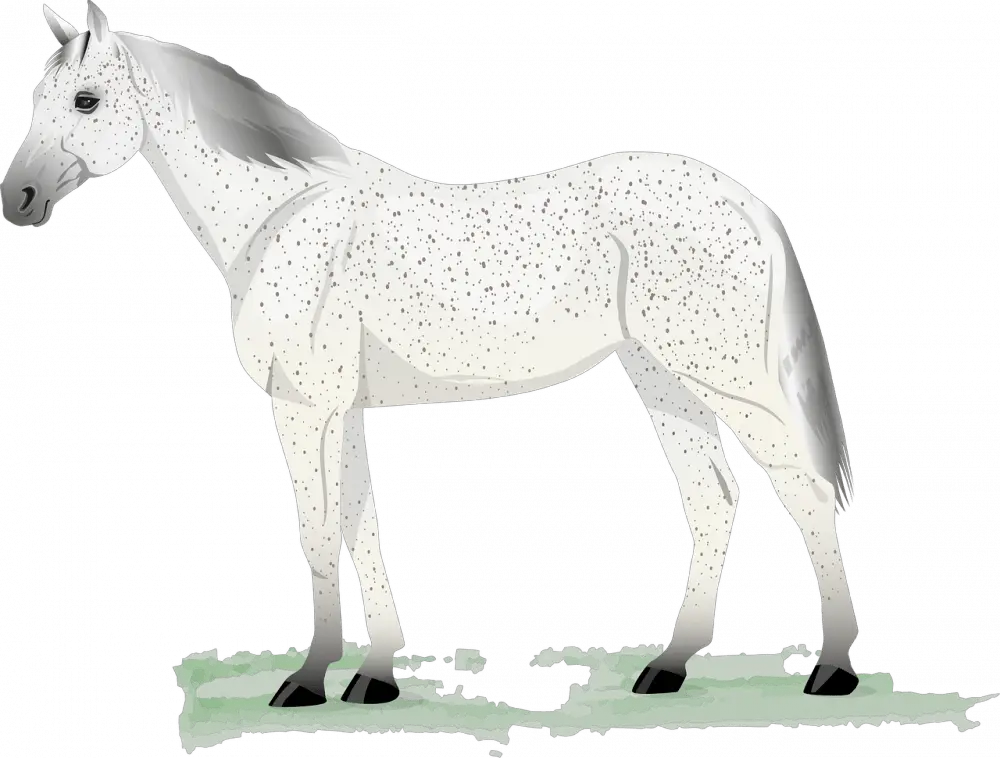
The Flea Bitten pattern got its name from the rust color of fleas. A creature you most likely know about, which lives off the blood of animals. Some animals can get covered and bitten all over with fleas. Yuck!
The many small chestnut or brownish flecks seen on these grey horses were thought to resemble fleas, hence the name.
A Flea Bitten Grey like I mentioned at the beginning of the post has a white coat with a sparse to dense amount of theses brownish, rust or chestnut like speckles.
The color of the Flea bitten pattern will be whatever the horse’s base coat color is. For example a bay horse will have bay colored spots and specks and a chestnut horse, chestnut color spots and specks.
This pattern develops most often in heterozygous greys.
Horses that become flea bitten usually go through a stage of having their coat go completely white. Homozygous grey horses tend to white out faster than heterozygous grey horses, but homozygous horses rarely become flea bitten.
Also just to note it is possible for flea bitten horses to start getting the speckles before their coat turns completely white.
If this freckling starts early enough the specks can become quite large and numerous, with the horse beginning to look a bit like a leopard spotted appaloosa.
Typically if the horse is going to get the flea bitten pattern it begins to show around 10 years or older, However it can happen up to a few years sooner or later than 10 years.
Each flea bitten horse is different with the amount of speckles they will have and it is common for the speckles to increase in the amount and density as the horse ages.
Flea Bitten Greys Confused With Roans
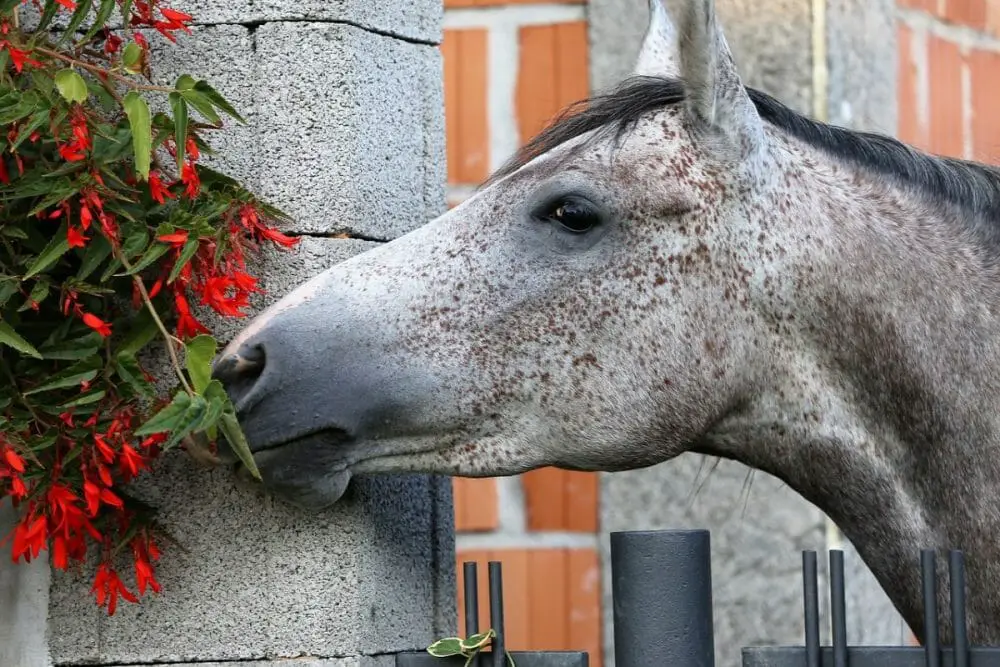
Some Flea Bitten greys only have a few specks so the pattern is barely noticeable and they look mostly white. While some other Flea Bitten Greys have so many speckles that they could be mistaken for a roan horse.
The difference between roans and similar looking grays is that roans have a dark base coat with white hairs interspersed throughout the coat.
Whereas a grey that looks like a roan really just has a dense amount of speckles, the flea bitten pattern.
Grey horses tend to start to lighten in color on the head around the eyes and muzzle. Roans do change color with age like grey horses do. Roans also usually have a darker colored head and legs.
Basics Of Grey Horses
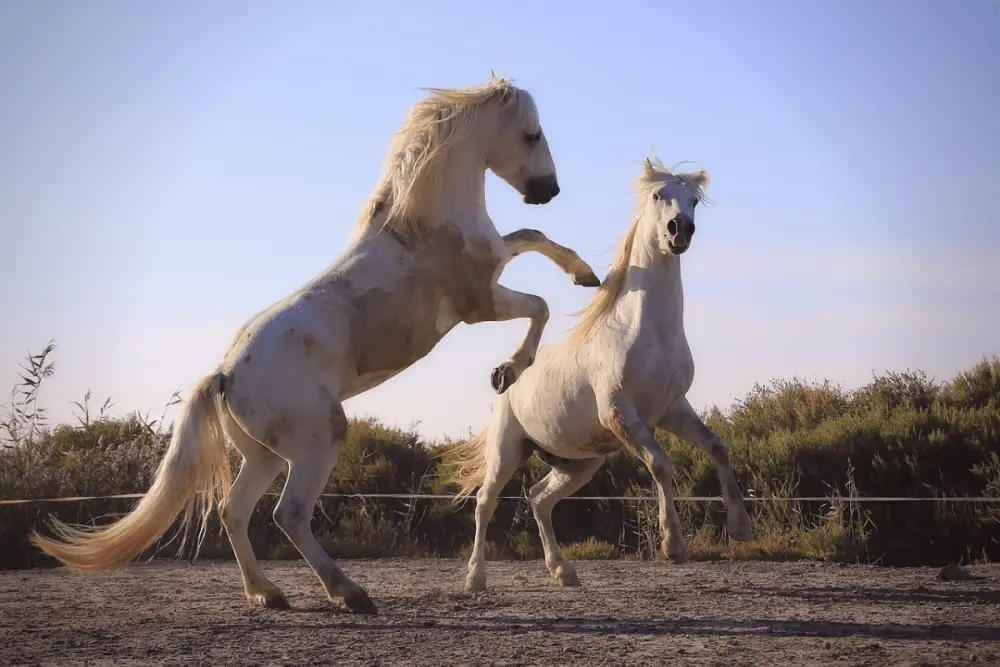
The horse coat color; grey is basically a modified version of the horse’s base coat color. It is a progressive depigmentation of the horse’s coat color.
When a grey foal is born, the color of the foal will be a solid color. As the horse ages, the coat will progressively get lighter with more white hairs. This grey pattern with white and colored hair can happen on any coat color.
After the foals first shedding a few white hairs will be found interspersed with the colored hairs. Every new coat after the horse sheds will contain more and more white hairs until the horse appears to be white.
Some grey horses retain a dark mane and tail for some time, whereas other grey horse’s mane and tail white out before their body does.
Light grey horses that have pure white coats get confused as white horses. Most horses people perceive as white horses are actually grey horses.
The difference between a white horse and a grey horse that looks pure white, is that a white horse has pink skin and a grey horse has blackish grey skin.
You can tell by looking at the skin around the eyes, ears and muzzle. However be aware that some grey horses do have white face or leg markings and they will have pink skin underneath those white markings alone.
Grey comes in many different shades.
Shades Of Grey Horse Coat Colors
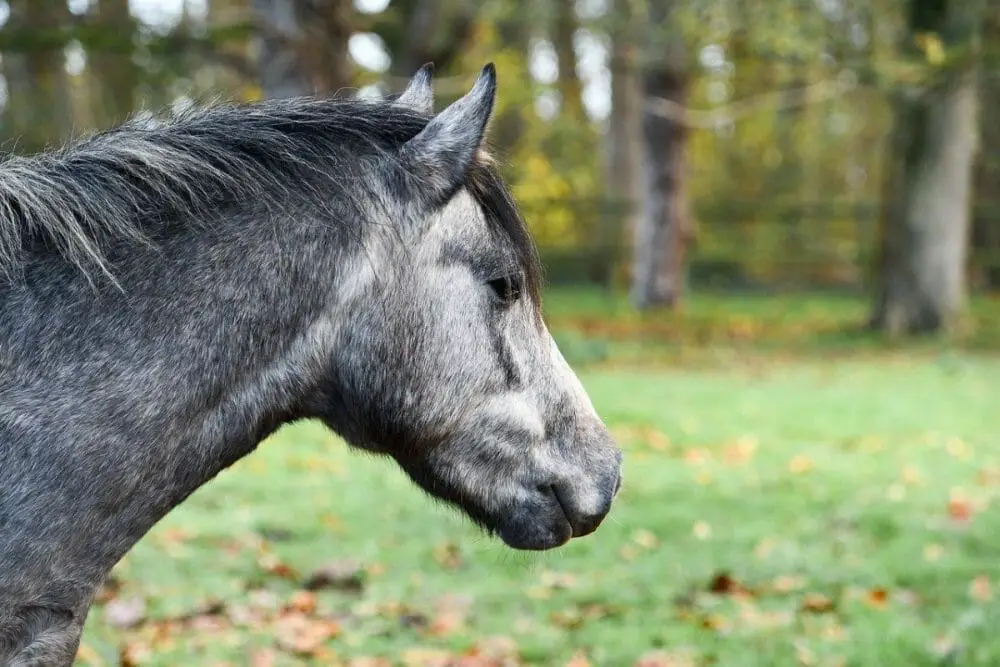
Steel Grey
This is the beautiful dark grey horse color you may have been lucky to see. Steel grey sometimes called Iron grey is a transition coat for the grey horse. It is seen on young grey horses with a black, liver chestnut or seal brown base coat. The Steel Grey color has a silver or bluish tint to it. Sometimes people confuse Steel Grey horses with Blue Roans or Grulla colored horses.
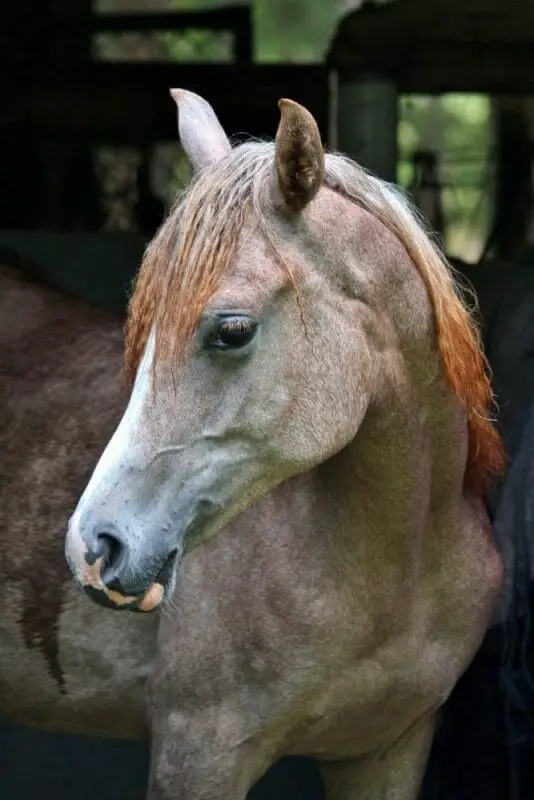
Rose Grey
This is another transition coat for the grey horse. It is seen on young grey horses with a bay or chestnut base coat which has a reddish tint. The rose grey color has a pinkish tint to the coat.
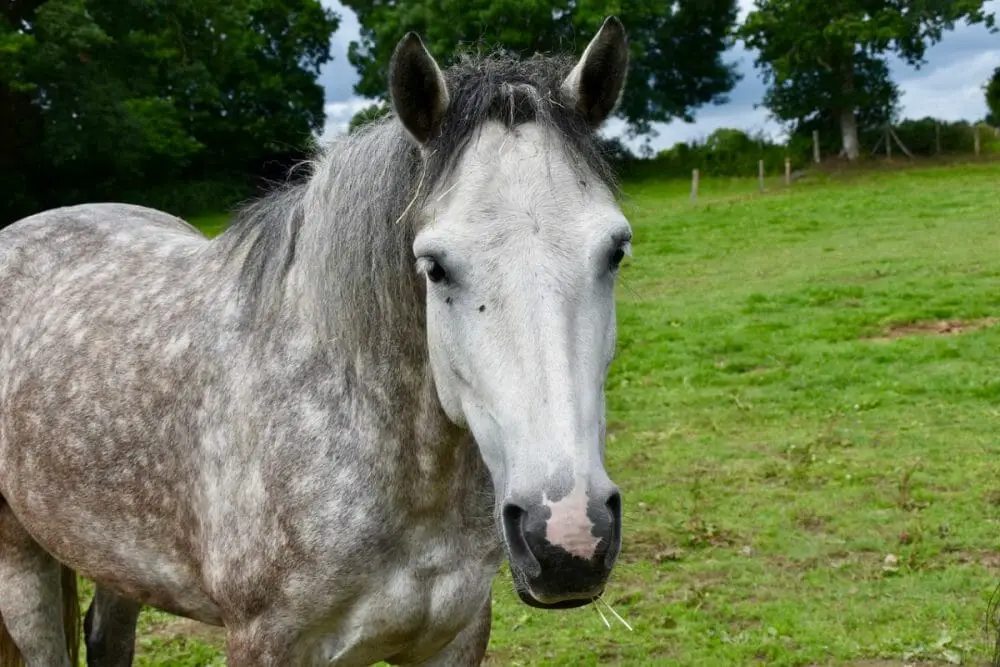
Dapple Grey
Not all grey horses get a dapple coat. But this is a transition coat that usually comes after Steel Grey and Rose Grey. Dappling occurs on any horse color but stands out more on a grey background.
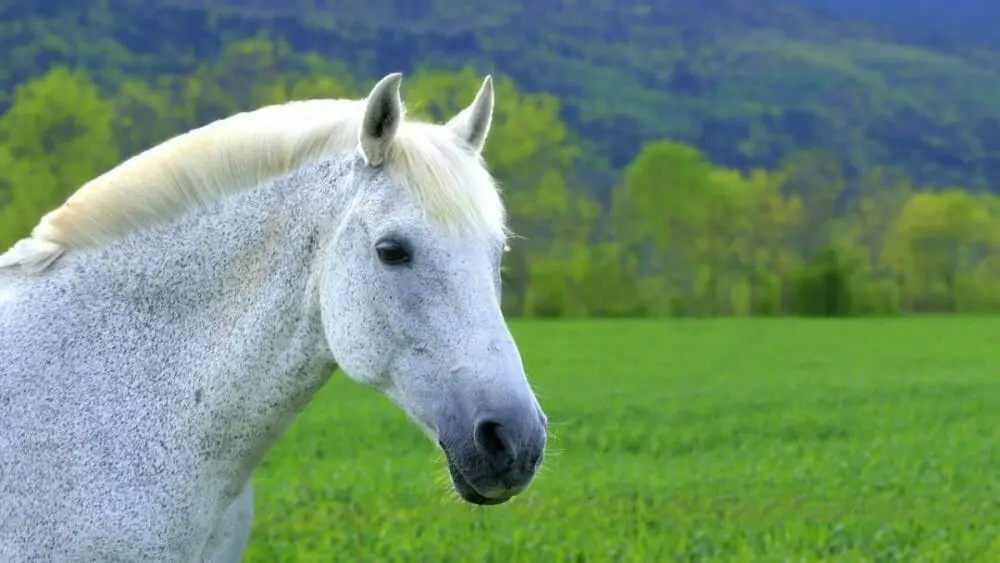
Flea Bitten Grey
Well, you should know all about this shade of grey by now. This is the grey horse that has a white coat with sometimes abundant and sometimes sparse reddish-brown speckles.
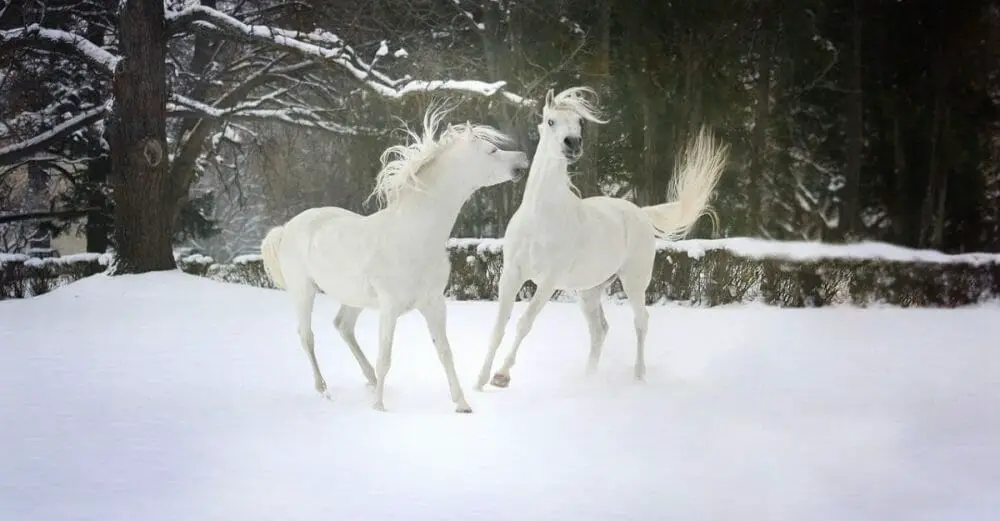
Light Grey
Light grey is sometimes called White grey. It is the grey color most people confuse with white, because the horse has a pure white coat. But a grey horse will also have grey or blackish skin.
Grey Horse Colors Changing At Different Ages
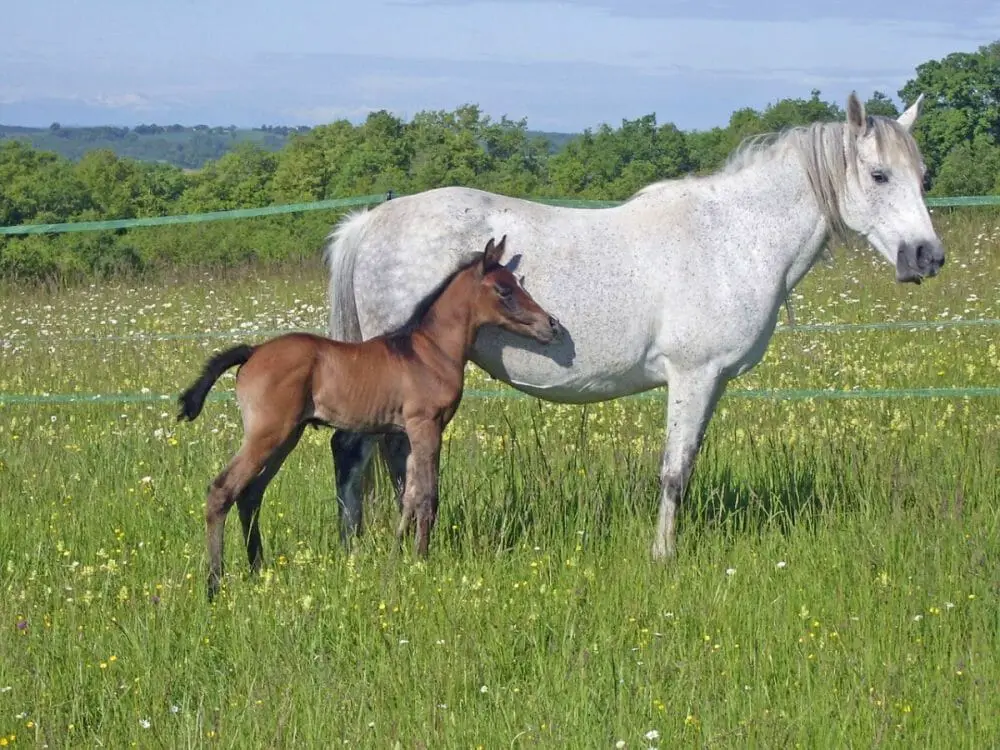
Foals
At this stage, the foal will be their completely base coat color.
So grey foals are born chestnut, bay, black or brown. Some grey foals may have little bits of grey around the eyes and muzzle.
Roan foals, on the other hand, are born with white hairs interspersed and the amount never changes as they grow whereas a grey foal will progressively get more and more white hairs.
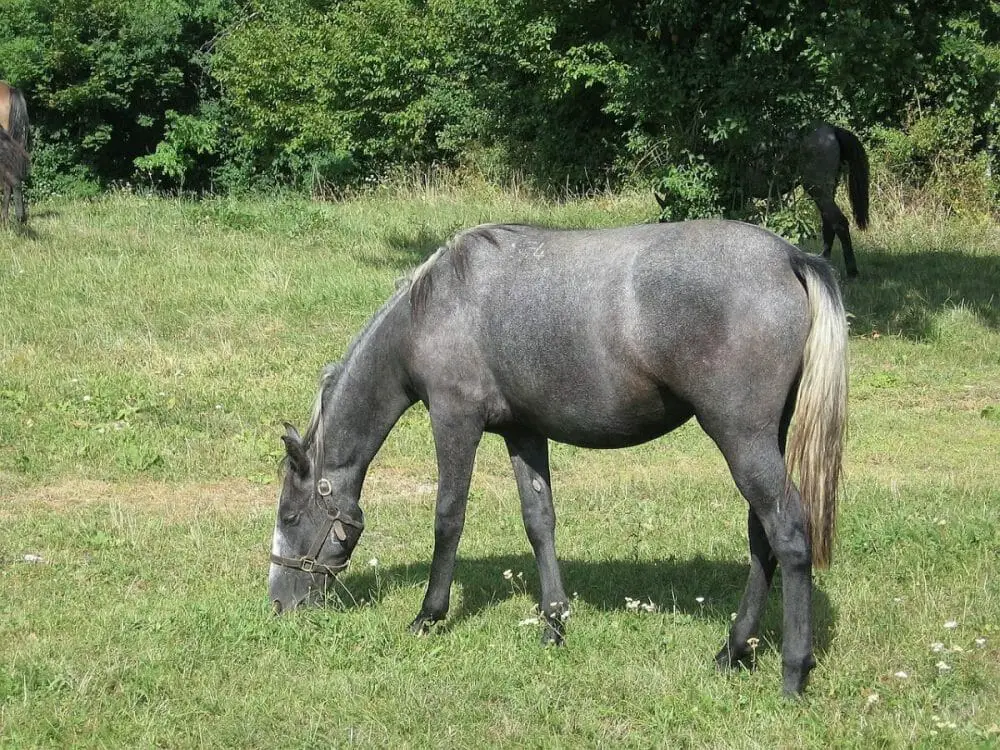
1-3 years
Grey horses, many times don’t show signs of greying until they are almost a yearling. 3 years old is generally the maximum age for greying to start, although it is much more rare for it to take that long.
Fillies and colts tend to be dark with white hairs beginning to intersperse in the hair.
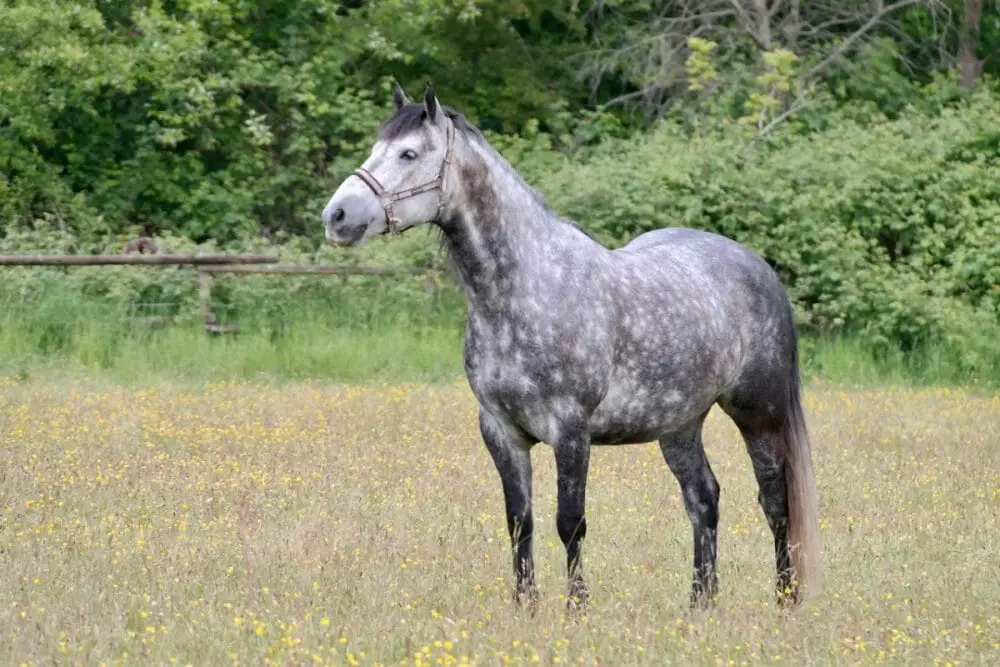
3-8 years
As grey horses get older there will be more and more white hairs interspersed and they will start to look a bit more like a roan.
This is when the colors rose grey and steel grey tends to make their appearance.
Dapple grey is another one that occurs around these ages. Not all grey horses will dapple, however. Also, the dapples you see in a dapple grey are different than the “dapple bloom” that comes from a nutritious diet which can disappear, with a change in diet.
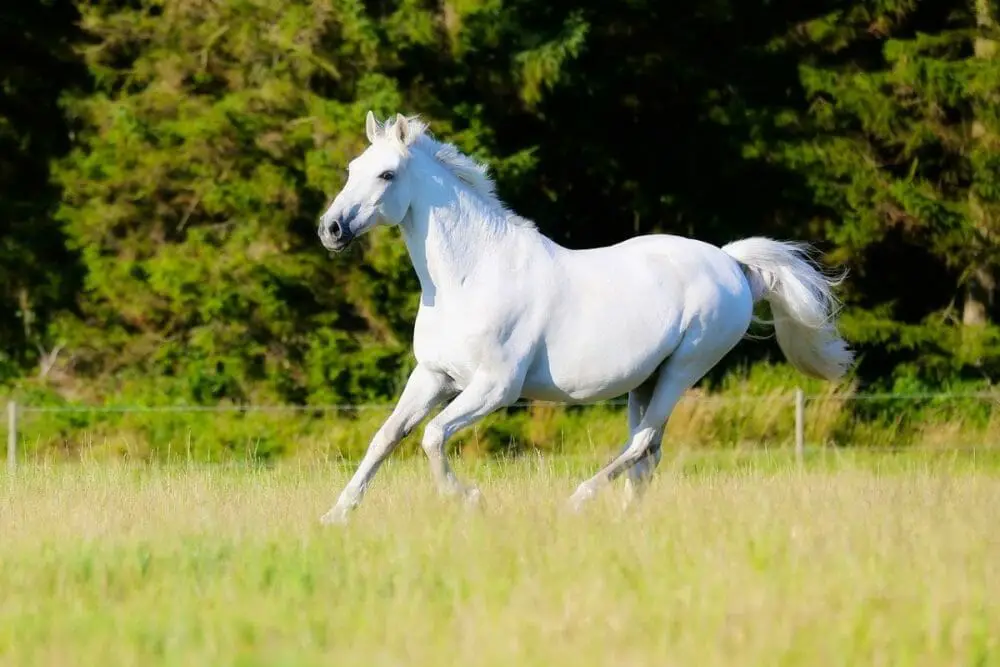
10 years old plus
Around this point, give or take a few years, the grey horse will have a fully white coat or almost a fully white coat.
Some grey horses will develop the Flea bitten grey pattern with speckles and some will remain with a white coat.
Genetics of Grey Horses
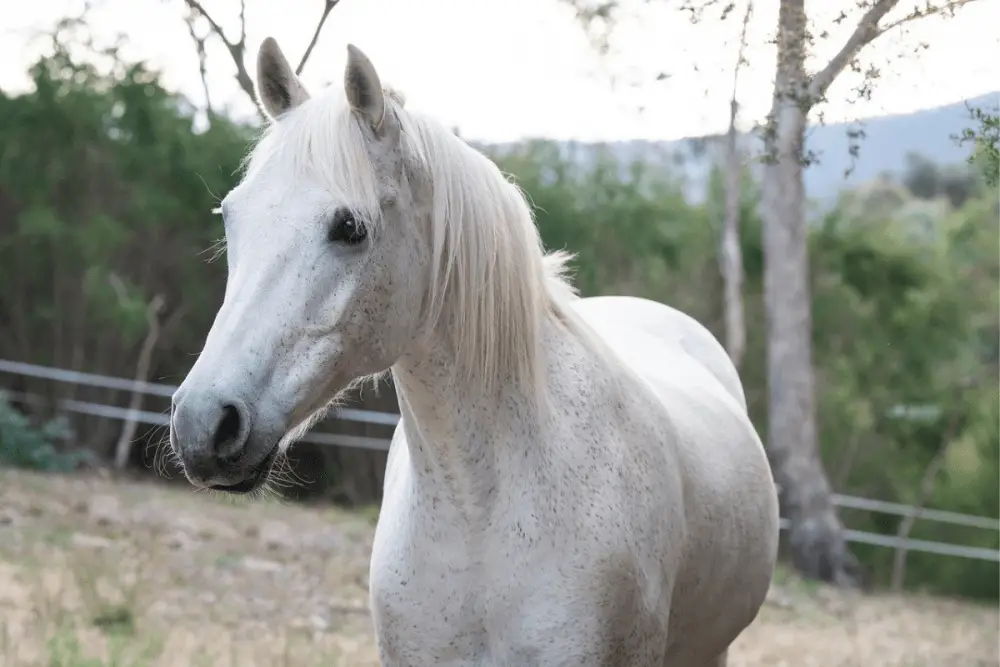
The gene responsible for the progressive greying of a grey horse is known as (G.) a solely dominant allele of a gene that controls specific kinds of stem cells
While the (g) gene allows for regular color expression when it is homozygous, gg.
Homozygous GG horses often gray out earlier in life and to a greater degree than heterozygous (Gg) horses both types can appear as white horses later in life.
To be a grey horse must they must carry at least 1 greying gene (G).
A grey homozygous horse will always have a grey foal. Whereas a heterozygous horse may have a colored baby or a grey foal.
The roaning gene often gets confused with the graying gene, because white hairs are mingled in with the basic color hairs.
However with roaning the white hairs are present with the first coat and don’t increase as the horse gets older.
But to make things more complicated. Horses can have the graying gene and the roaning gene. They would be born with the white hairs and then get progressively more gray.
The speckles of Flea Bitten Grey are thought to be controlled by a different and most likely a recessive gene, not associated to the gray gene. It is likely that other horse colors can have the flea-bitten genotype, but the speckles wouldn’t show considering they are the same color as the base coat!
But also, researchers have suggested the pigmented speckles of the Flea Bitten pattern, may be caused by a loss or inactivation of the gray (G)allele in some of the somatic cells.
Melanomas in grey horses
Unfortunately, melanomas are most common in grey horses although they can be found in any color horse.
The grey (G) allele is associated with predisposition to cancer.
Older horses tend to suffer from melanomas but it happens in younger horses as well. By the age of 15 years old most Grey horses will have at least one melanoma with varying degrees of severity.
Growths commonly occur near the dock and buttocks area.
The average lifespan of a grey horse is shorter than other horses, around 2 years shorter. Melanomas that spread to the lungs or other organs commonly cause death soon after.
Homozygous greys that tend to get a white coat faster and are less likely to become Flea Bitten grey, are more likely to develop melanomas.
Horse & Pony Breeds That Commonly Have Greys
Lipizzan
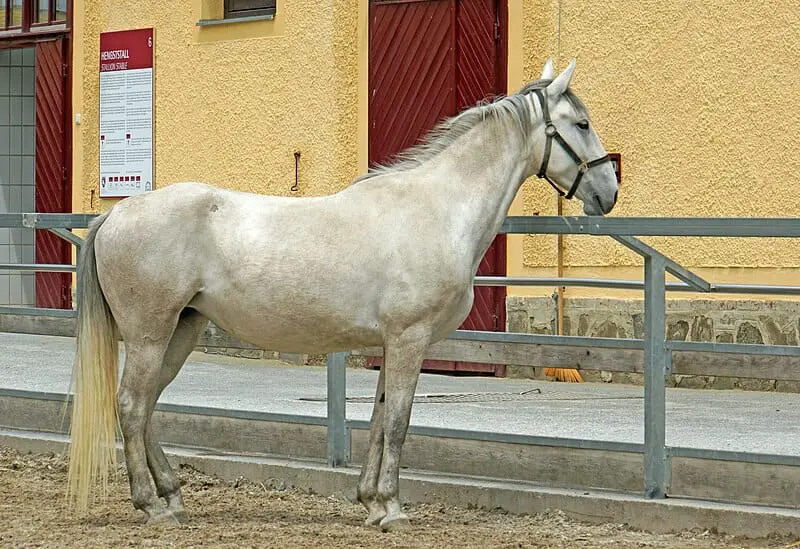
Dennis Jarvis from Halifax, Canada
Andalusian
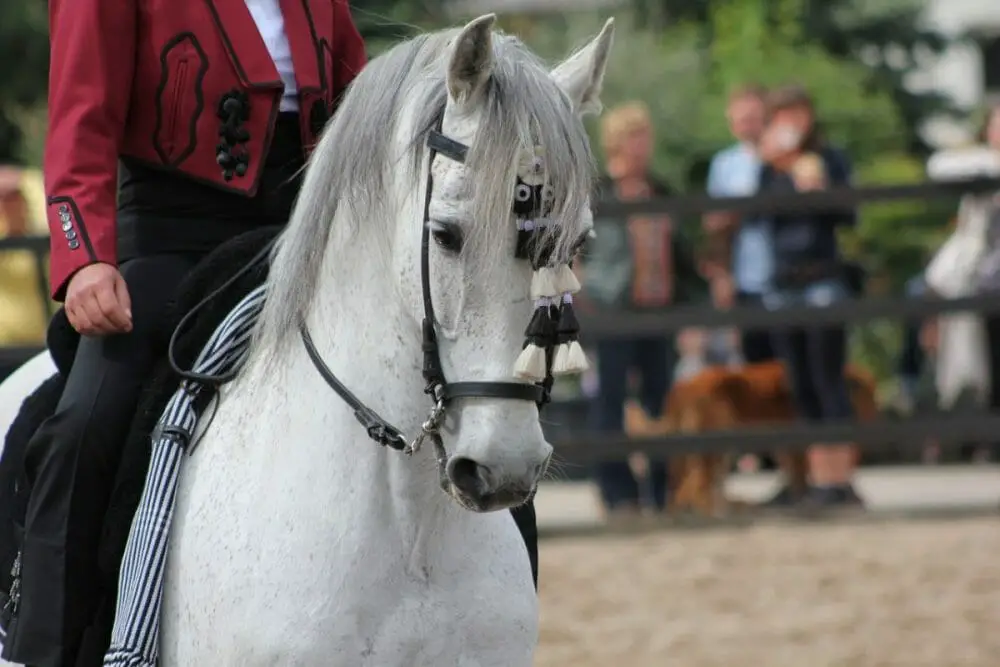
Percheron
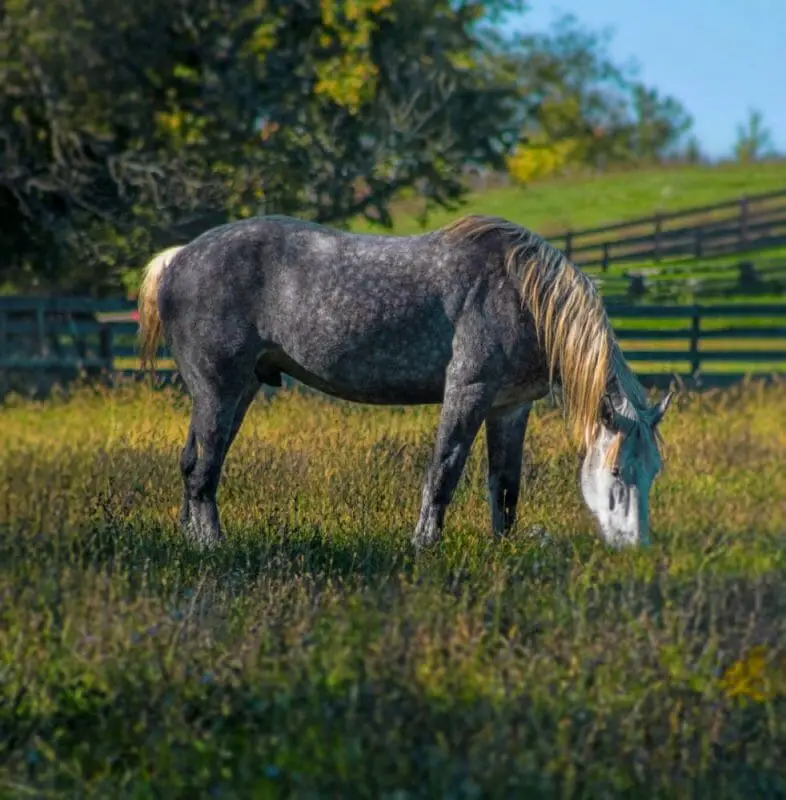
Thoroughbred
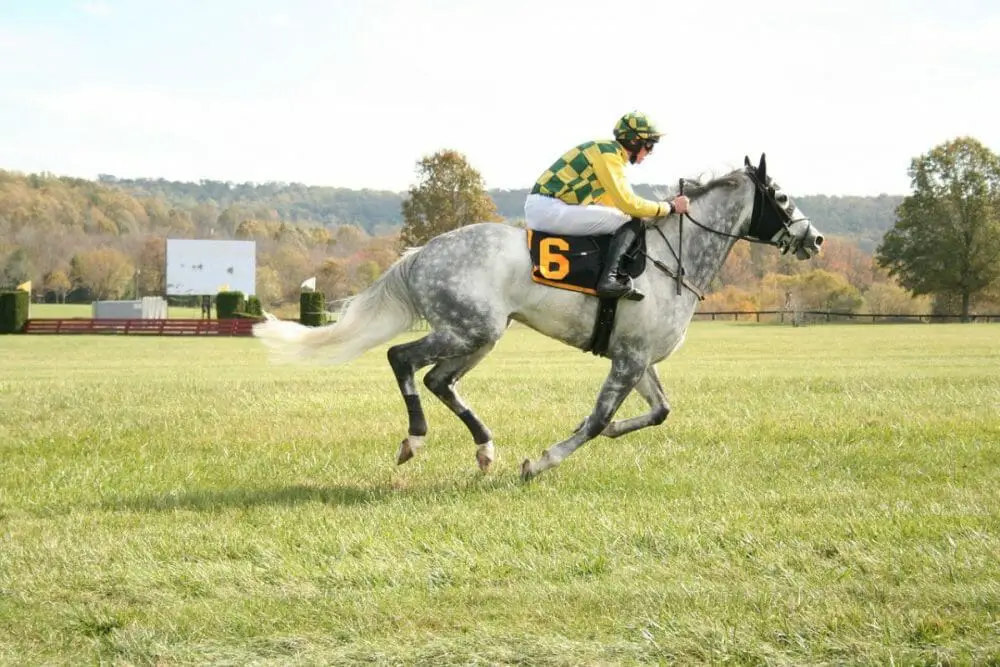
Quarter Horse
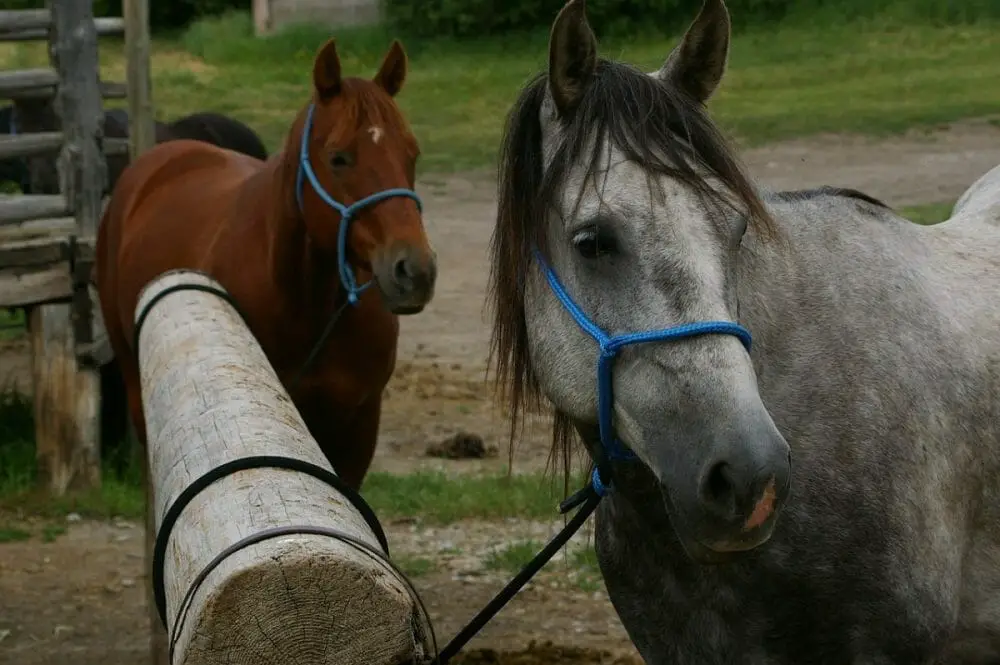
Connemara
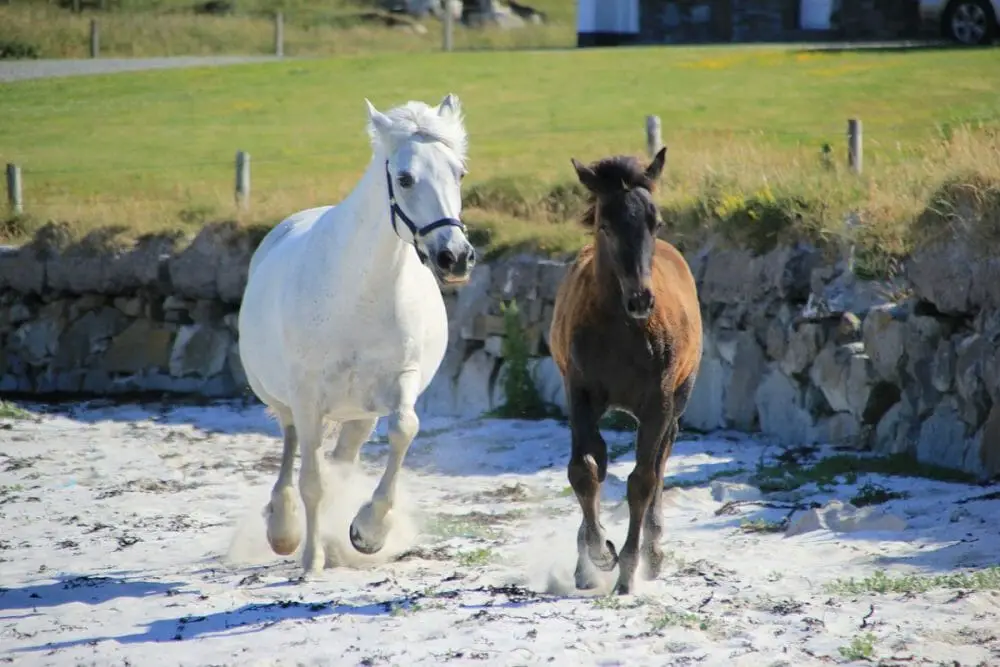
Welsh Pony
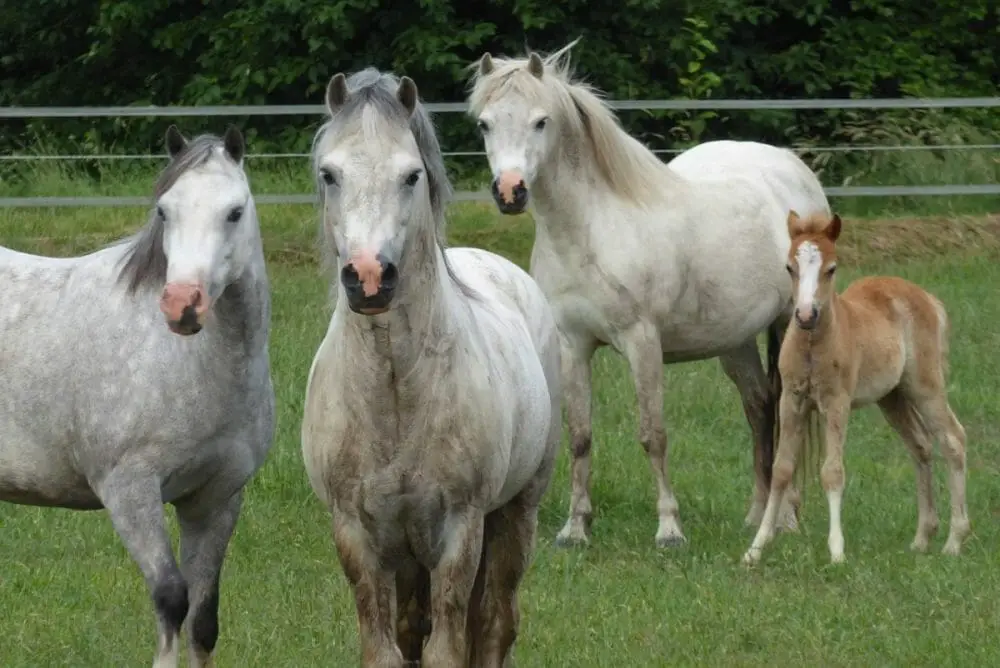
Irish Sport Horse/ Irish Draft
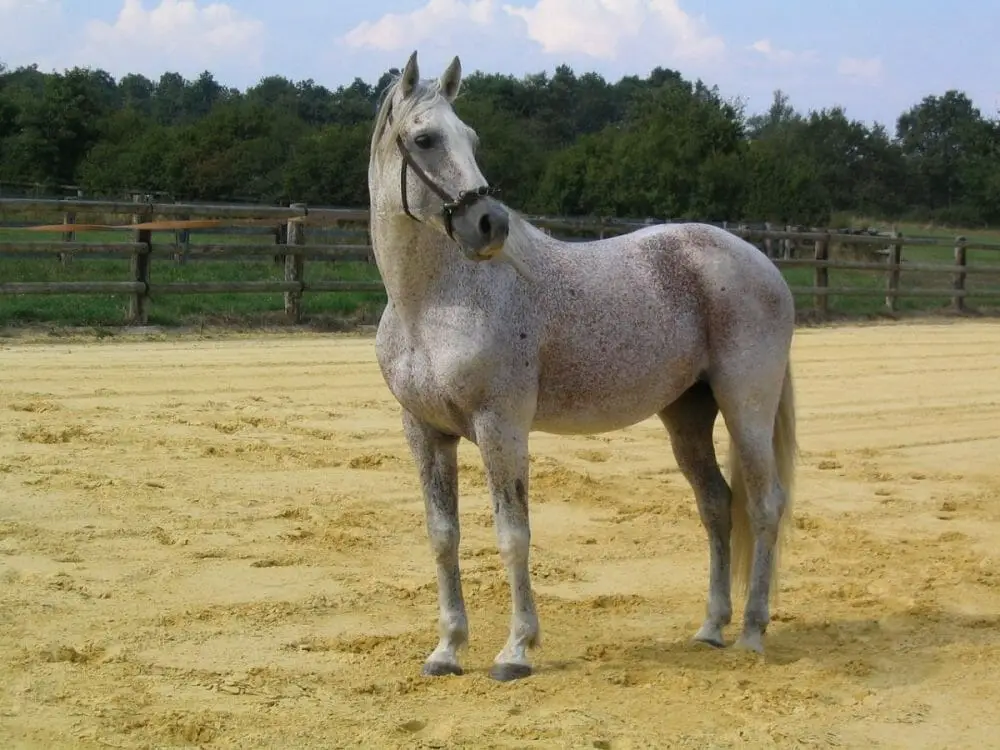
Holsteiner
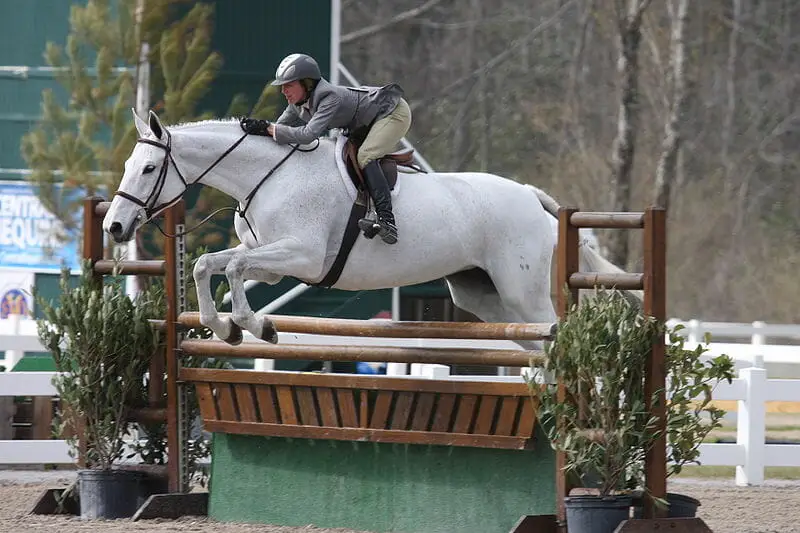
Hanovarian
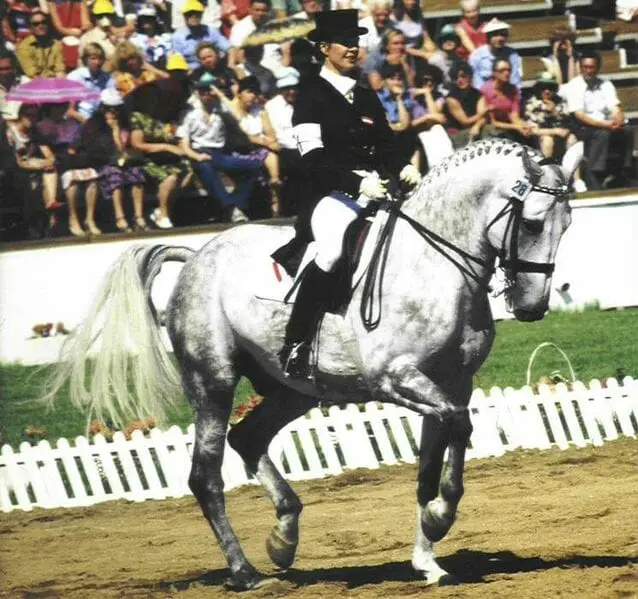
Trakehner
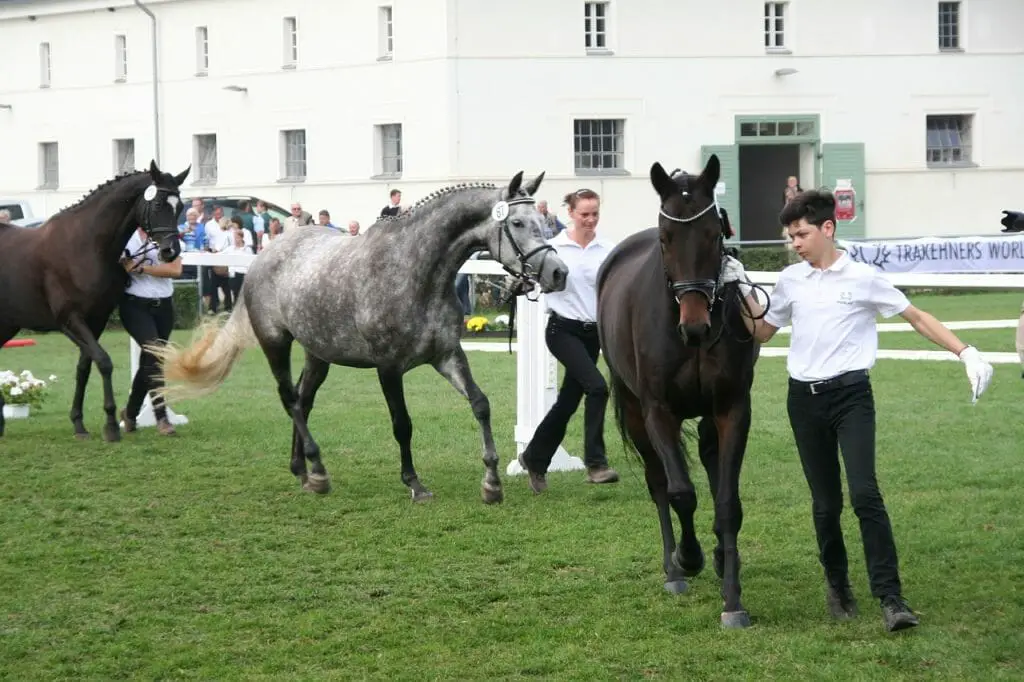
Which color is your favorite shade of grey horse coats?
Cheers, Kacey
Related Blog Posts
- Complete Guide To Horse Coat Colors & Patterns: FAQ’s Included
- Bay Horses 101: Learn All About The Beautiful Shades Of Bay
- 16 Dapple Grey Horse Facts With Beautiful Pictures | Breeds List | Resources
- Learn 10 Facts, Differences & Color Shades Of Buckskin & Dun Horses
- 27 Interesting Palomino Horse Facts With Beautiful Pictures & Some Extras
- All About Blue Roan Horses (Genetics, Facts, Breeds & More!)
- Horse Face and Leg Markings Chart
- Horse Coat Patterns for the American Paint Horse

